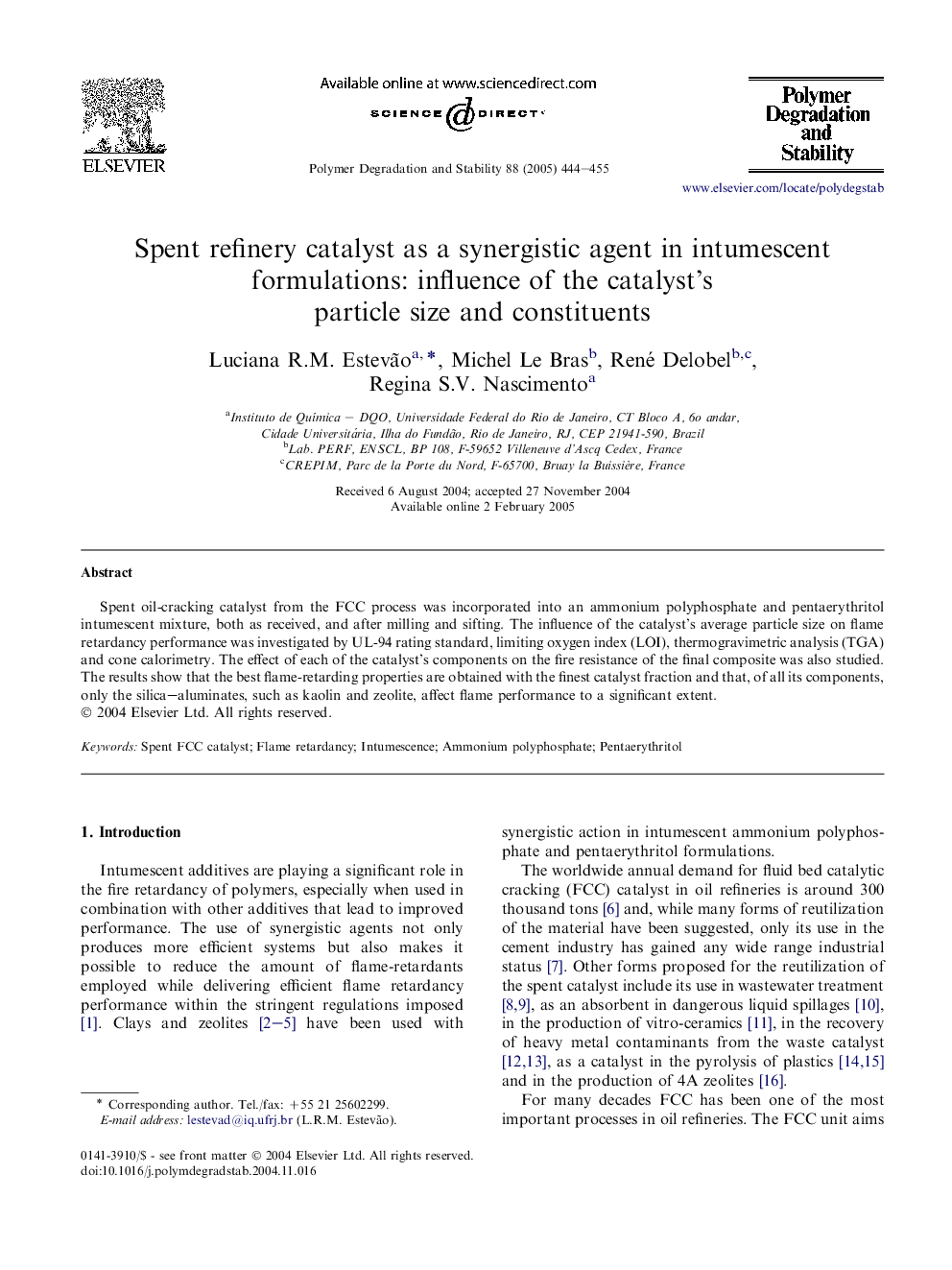| Article ID | Journal | Published Year | Pages | File Type |
|---|---|---|---|---|
| 9560355 | Polymer Degradation and Stability | 2005 | 12 Pages |
Abstract
Spent oil-cracking catalyst from the FCC process was incorporated into an ammonium polyphosphate and pentaerythritol intumescent mixture, both as received, and after milling and sifting. The influence of the catalyst's average particle size on flame retardancy performance was investigated by UL-94 rating standard, limiting oxygen index (LOI), thermogravimetric analysis (TGA) and cone calorimetry. The effect of each of the catalyst's components on the fire resistance of the final composite was also studied. The results show that the best flame-retarding properties are obtained with the finest catalyst fraction and that, of all its components, only the silica-aluminates, such as kaolin and zeolite, affect flame performance to a significant extent.
Related Topics
Physical Sciences and Engineering
Chemistry
Organic Chemistry
Authors
Luciana R.M. Estevão, Michel Le Bras, René Delobel, Regina S.V. Nascimento,
